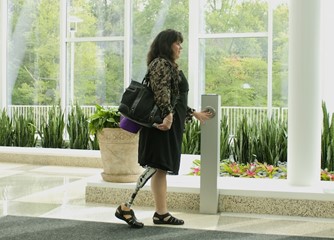Kathleen Vermillion is a passionate voice for change and inclusivity, working as a disability advocate. With a deep commitment to dismantling barriers and championing the rights of individuals with disabilities, Vermillion's insights illuminate the ongoing struggle, progress, and the pressing need for a more inclusive society. In the following article, Kathleen explores the challenges and triumphs that shape the disability rights landscape in the modern era.
Disability rights advocacy has come a long way since its inception in the
1960s. As we head toward 2024, it is crucial to understand the current state of disability rights and how far we have come. Below, Kathleen Vermillion discusses the history of disability rights advocacy, current issues facing the community, and ways individuals can support the movement.
Kathleen Vermillion Notes the History of Disability Rights Advocacy
The disability rights movement in the United States began with individuals like Ed Roberts and Judy Heumann leading the charge for equal rights and accessibility. These activists fought against discriminatory policies and fought for equal access to education, employment, and public spaces. In
1973, the Rehabilitation Act was passed, prohibiting discrimination on the basis of disability in any program receiving federal funding. This was a significant step towards equal rights for individuals with disabilities.
In 1990, the Americans with Disabilities Act (ADA) was signed into law, providing comprehensive civil rights protections to individuals with disabilities. This landmark legislation prohibits discrimination in all areas of public life, including employment, education, transportation, and public accommodations. Kathleen VermillionIt also requires reasonable accommodations to be made for individuals with disabilities to ensure equal access.
Current Issues Facing the Disability Community
While significant progress has been made in terms of disability rights, there are still many challenges facing the community today. One major issue is accessibility. Despite laws like the ADA, many public spaces and facilities are still not fully accessible to individuals with disabilities. This includes lack of wheelchair ramps, accessible restrooms, and captioning for the deaf and hard of hearing.
Kathleen Vermillion explains that another pressing issue is employment discrimination. According to the U.S. Department of Labor, in 2020, only
17.9% of individuals with disabilities were employed in 2020 compared to 61.8% of individuals without disabilities. This significant gap highlights the ongoing discrimination and barriers faced by individuals with disabilities in the workforce.
Additionally, there is a lack of representation and inclusion for individuals with disabilities in media, politics, and society as a whole. This perpetuates harmful stereotypes and further marginalizes the disability community.
 The Importance of Disability Rights Advocacy
The Importance of Disability Rights Advocacy
Disability rights advocacy is crucial because it ensures that individuals with disabilities have equal access to opportunities and are not discriminated against. It also works towards breaking down societal barriers and promoting inclusion for all.
Furthermore, Kathleen Vermillion explains that disability rights advocacy benefits society as a whole. When individuals with disabilities are given the same opportunities as everyone else, they can contribute their talents and skills to their communities, enriching our society.
How Individuals Can Support the Disability Rights Movement
There are many ways individuals can support disability rights advocacy. One of the most significant ways is by educating oneself and others about disabilities and the challenges faced by those who have them. This includes learning about different types of disabilities, accessibility issues, and how to be an ally to individuals with disabilities.
Kathleen Vermillion notes that another crucial way to support the disability rights movement is by advocating for accessibility and inclusion in your community. This can include advocating for accessible facilities, promoting diversity and representation in media and politics, or supporting organizations that work towards disability rights.
Individuals can also support the disability community by being mindful of ableist language and behaviors. This includes avoiding derogatory terms used to describe individuals with disabilities and being aware of the barriers that may exist for individuals with disabilities in everyday situations.
Additionally, supporting and employing businesses owned by individuals with disabilities can also make a significant impact. Kathleen Vermillion says that this not only empowers individuals with disabilities but also promotes diversity and inclusivity in the business world.
Conclusion
Disability rights advocacy is crucial to ensure equal access and opportunities for individuals with disabilities. While progress has been made, there are still many challenges facing the disability community, including accessibility barriers and discrimination in employment and society as a whole. Kathleen Vermillion notes that it is important for individuals to support the movement through education, advocacy, and promoting inclusion in their communities. Together, we can work towards a more inclusive and equitable future for all individuals with disabilities. Overall, it is essential to continue to push for progress and equality in disability rights advocacy in the 21st century and beyond.
 The Importance of Disability Rights Advocacy
The Importance of Disability Rights Advocacy